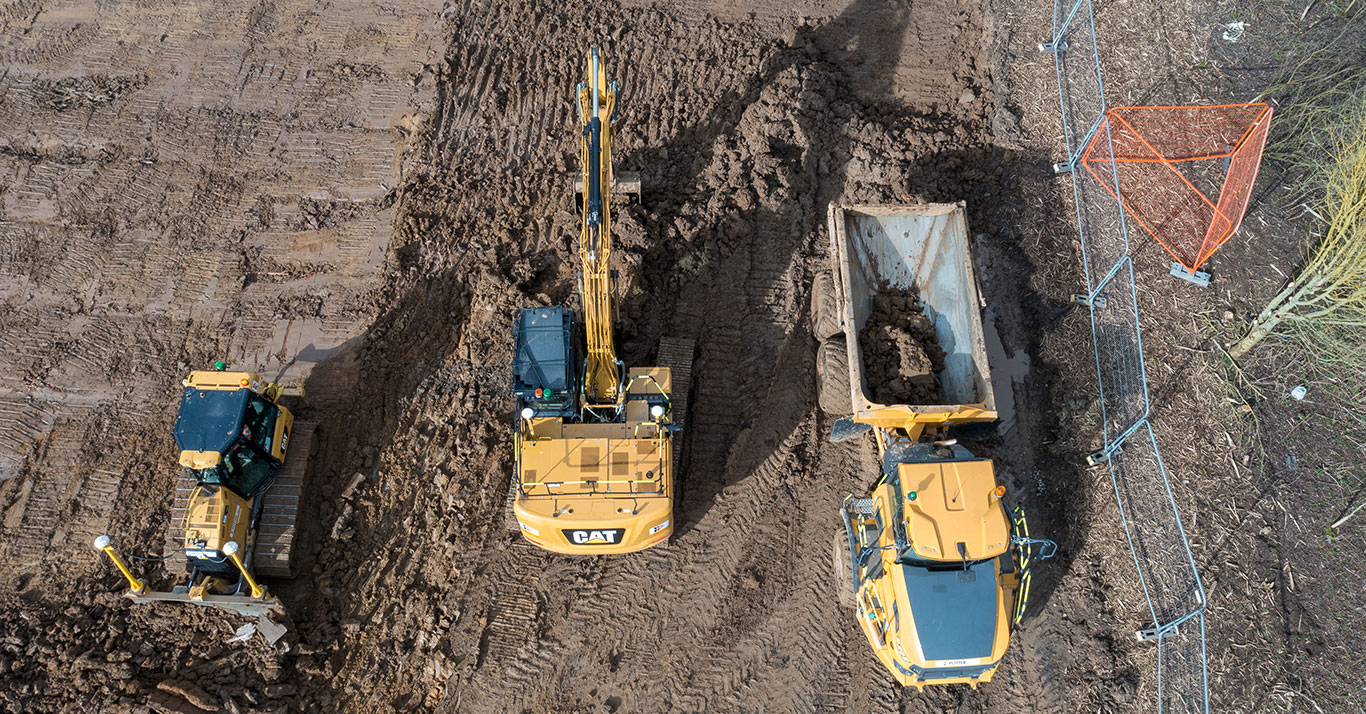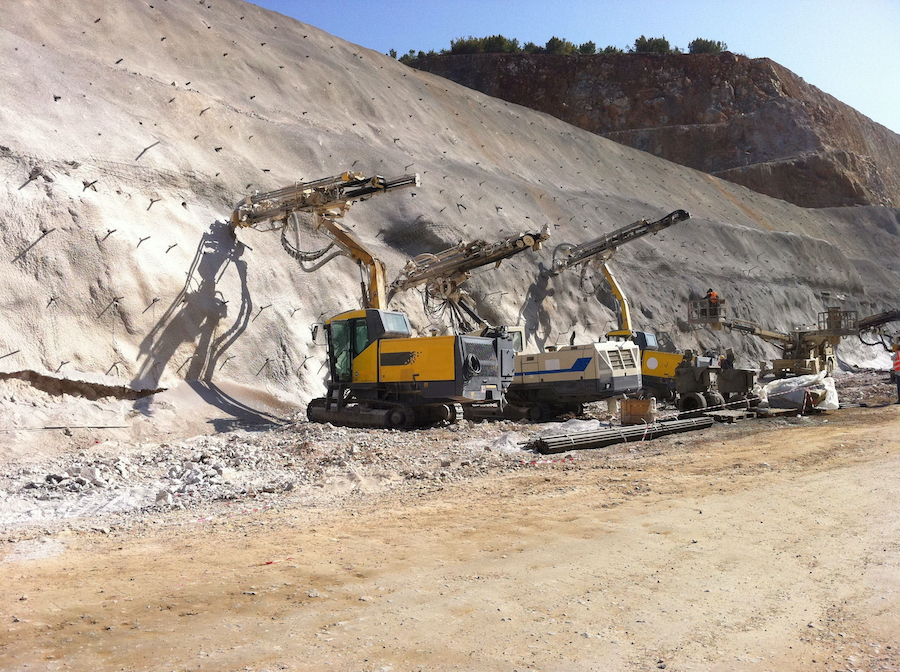A Comprehensive Guide: All About Geotechnical Engineering and Its Applications
A Comprehensive Guide: All About Geotechnical Engineering and Its Applications
Blog Article
The Value of Geotechnical Engineering in Addressing Ecological Difficulties and Enhancing Building Safety
Geotechnical engineering serves as a keystone in the crossway of environmental stewardship and construction safety and security, providing critical understandings into the habits of soil and rock under different conditions. By carrying out tactical website investigations and customized reduction steps, geotechnical designers play an important duty in protecting both human lives and eco-friendly integrity.

Role of Geotechnical Design
Geotechnical design plays a critical role in the layout and building and construction of framework by resolving the actions of dirt and rock materials under different conditions. This field of engineering is vital for understanding the interaction between frameworks and the ground, that includes identifying the load-bearing capability of soil, assessing security, and forecasting prospective settlement or failure.
Geotechnical designers are accountable for carrying out site examinations, which include sampling and screening soil and rock to gather information on their physical and chemical residential or commercial properties. This details is essential for making foundations, keeping wall surfaces, and various other earth-retaining structures that make certain security and longevity. Furthermore, geotechnical design informs the option of suitable construction approaches and materials, therefore lessening risks connected with soil actions.
Additionally, the integration of geotechnical design concepts into city planning and environmental monitoring is important for addressing difficulties such as ground contamination and groundwater monitoring. By comprehending geotechnical variables, engineers can establish lasting solutions that improve the strength of infrastructure against all-natural hazards, while likewise advertising ecological stewardship. Ultimately, the role of geotechnical engineering is crucial for achieving risk-free, sturdy, and environmentally mindful building and construction techniques.
Soil Erosion Mitigation
Dirt disintegration positions a substantial threat to both environmental stability and facilities stability, influencing approximately 24 billion lots of productive soil lost each year worldwide. This phenomenon is worsened by elements such as deforestation, urbanization, and poor agricultural techniques. Geotechnical design plays a critical role in creating reliable dirt disintegration reduction techniques that guard both the environment and building jobs.
One technique requires the application of erosion control techniques such as greenery planting, which stabilizes soil with root systems. In addition, the building and construction of preserving wall surfaces and balconies can effectively reduce surface area drainage and secure prone areas from erosion. Correct water drainage style is also essential; it minimizes water buildup and routes excess overflow away from critical frameworks.
Additionally, geotechnical engineers use dirt stabilization techniques, such as the application of geotextiles and eco-friendly mats, to enhance dirt cohesion and prevent destruction - all about geotechnical engineering. Routine surveillance and evaluation of erosion-prone sites make it possible for timely treatments, making sure long-term sustainability. By incorporating these techniques, geotechnical design not only minimizes the impacts of dirt erosion yet also adds to the resilience of framework against ecological challenges, eventually cultivating a much safer and much more lasting built atmosphere
Groundwater Protection Methods
Groundwater offers as a crucial source for drinking water, farming, and commercial procedures, making its defense crucial for ecological sustainability and public wellness. Reliable groundwater defense approaches are vital in mitigating contamination risks and ensuring the durability of this resource.

Normal tracking of groundwater quality is additionally vital, enabling very early detection of contamination resources and assisting in timely removal efforts. Using advanced modern technologies, such as geophysical surveys and remote picking up, aids in recognizing prospective threats to groundwater books.
Furthermore, public education and learning and stakeholder engagement are vital, fostering neighborhood assistance for groundwater security campaigns. all about geotechnical engineering. By combining regulative actions, technological improvements, and neighborhood participation, we can create a detailed structure that safeguards groundwater sources while promoting lasting growth and construction practices
Landslide Danger Administration
Landslides posture significant threats to both human safety and security and infrastructure, making efficient threat management techniques crucial. Geotechnical engineering plays an important duty in recognizing, assessing, and mitigating landslide dangers. A detailed understanding of incline security, soil technicians, and hydrology is vital for Learn More Here developing efficient danger administration strategies.
The primary step in landslide threat management involves comprehensive site investigations, that include geological mapping and soil screening. These examinations help designers review the possibility for landslides by recognizing critical factors such as slope angles, soil make-up, and water web content. Making use of innovative modern technologies such as remote picking up and geophysical studies can improve the accuracy of these evaluations.
Once risks are identified, ideal reduction procedures can be carried out. These may include design remedies such as preserving wall surfaces, go to my blog drainage systems, and slope stablizing methods. Additionally, keeping track of systems ought to be established to identify indicators of ground motion and changes in water degrees, enabling proactive treatments.

Enhancing Construction Safety
Construction sites click over here now frequently present a myriad of risks that can endanger worker security and job stability. Geotechnical engineering plays a vital function in enhancing construction safety by providing essential insights right into subsurface problems. With detailed soil and rock analysis, geotechnical designers can recognize prospective dangers, such as soil instability, groundwater issues, and seismic susceptabilities, which might compromise the security of building activities.
Carrying out geotechnical solutions, such as correct structure style and the use of keeping structures, minimizes these dangers considerably. These solutions not just make sure the stability of the frameworks being developed but additionally produce a safer working setting for building personnel. Furthermore, rigorous surveillance and assessment of website conditions throughout the construction procedure are essential. Making use of sophisticated technologies like ground-penetrating radar and inclinometer systems makes it possible for real-time data collection, permitting for timely treatments when risks are detected.
Furthermore, promoting a society of safety and security via training and adherence to established safety protocols even more improves building website safety and security. By incorporating geotechnical proficiency into the planning and execution phases, construction projects can achieve higher safety standards, ultimately safeguarding workers and guaranteeing successful project conclusion.
Verdict
In conclusion, geotechnical design serves as a critical discipline in promoting and tackling ecological difficulties building security. Via effective soil erosion reduction, groundwater defense approaches, and landslide risk monitoring, geotechnical engineers contribute to the growth of resistant framework.
Geotechnical design serves as a foundation in the intersection of ecological stewardship and construction security, providing important insights into the actions of soil and rock under different problems. Geotechnical engineering notifies the option of appropriate building approaches and materials, consequently decreasing risks connected with dirt behavior.
Geotechnical engineering plays an essential duty in developing effective dirt disintegration reduction strategies that protect both the atmosphere and building and construction projects.
Furthermore, geotechnical designers use dirt stablizing techniques, such as the application of geotextiles and biodegradable mats, to improve dirt communication and protect against destruction. Through extensive soil and rock analysis, geotechnical engineers can determine prospective dangers, such as dirt instability, groundwater concerns, and seismic susceptabilities, which might endanger the safety and security of building and construction tasks.
Report this page